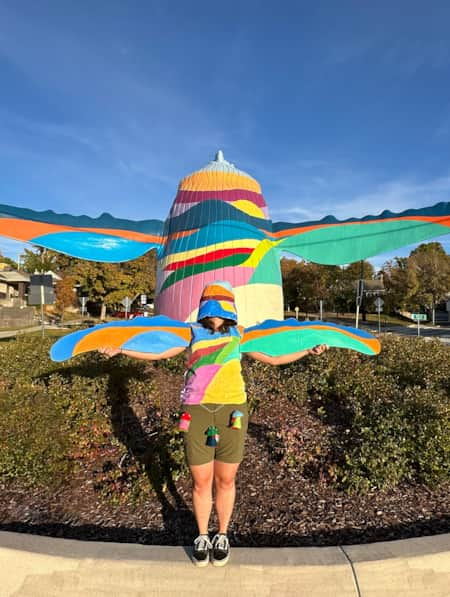


History and Heritage
The International Peace Gardens provides "a lesson in peace and understanding," according to Mrs. Otto Wiesley, citizen chair of the Salt Lake Council of Women, who founded the International Peace Gardens in 1939. World War II thwarted a 1947 opening to coincide with the Centennial, but it finally opened in 1952 as one of two International Peace Gardens in the United States (the other is located in North Dakota on Canadian border).
Today, many structures show their age after 70 years, but the garden’s philosophy of diversity and inclusion (along with the county’s regular maintenance and recent refurbishments) continues to attract visitors of all backgrounds and nationalities. Of the 28 represented countries, here are a few highlights.
Garden Highlights
-
China
The China garden’s Plum Pavillion is the most prominent display. Two large traditional lion guardian statues “protect” the entry. This garden once included plum trees, magnolia trees, peonies, begonias and citrus. These did weather over time, however, bamboo, pines, lotuses and water lilies still dot the Jordan River bank.
-
Denmark
Denmark’s garden once grew marguerite daisies, the floral emblem of the country and a popular reference in fairy tales written by Hans Christian Andersen. A replica of the author’s The Little Mermaid sculpture — one of Copenhagen’s biggest tourist attractions and symbols — overlooks the plot. The garden also features a pergola draped with bright orange trumpet vines.
-
Greece
Greece is another hard-to-miss garden. Grand Ionic columns greet visitors to its celebration of the beginning of democracy and the Olympics. Visitors can read about Greece’s most famous philosophers, statesmen, academics and athletes, including Socrates, Plato, Aristotle, Sophocles, Archimedes, Hippocrates and Spyridon Louis.
-
India
India’s plot once represented the lotus, the country’s national flower. The lotus — a symbol of spirituality, fruitfulness, wealth, knowledge and illumination — no longer thrives in this garden, however, the same ethos lives in its two sculptural representations: Preaching Buddha and Mahatma Gandhi.
-
Switzerland
It’s difficult to miss the eight-foot-tall Matterhorn replica staking claim in Switzerland’s garden. A mini Swiss chalet sits nearby the steel-and-cement mountain, as does a rustic bridge, rock gardens and a variety of shrubs, trees (including Mugho pines and quaking aspens), evergreens, plants and flowers.
-

Events
The International Peace Gardens hosts cultural events like Norwegian Constitution Day and Swedish Midsummer Festival. It is also available for weddings, picnics and memorials by filling out an application through the International Peace Gardens.
-

Photography
The International Peace Gardens offers several unique backdrops for photos, whether you’re a professional or novice. Choose from the Plum Pavillion, Grecian columns, Japanese footbridge or any green or blooming hedge. Weekends can be busy with foot traffic, however early mornings and evenings (when traffic is slower) provide the best natural light for photos. Remember to be mindful of the surroundings; please don’t pick or step on flowers.
-

Plants and Botany
At its peak, the International Peace Gardens grew plants native to each country. Switzerland’s garden grew Alpine Edelweiss; China boasted magnolia trees (a symbol of peace); Sweden hosted 30 types of Swedish lilacs; and thousands of colors of Dutch tulips sprang from the Netherlands’ garden. Unfortunately, these did not weather over time and much of today’s garden is adorned with annuals and perennials hardy to Utah’s climate. Blooms, like the ones spelling out each country, are best viewed from May until October.








